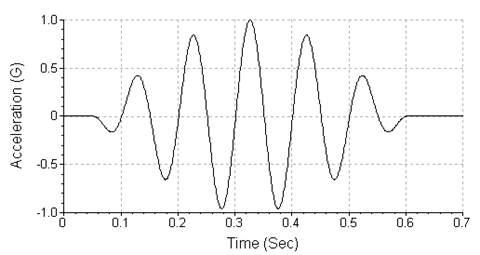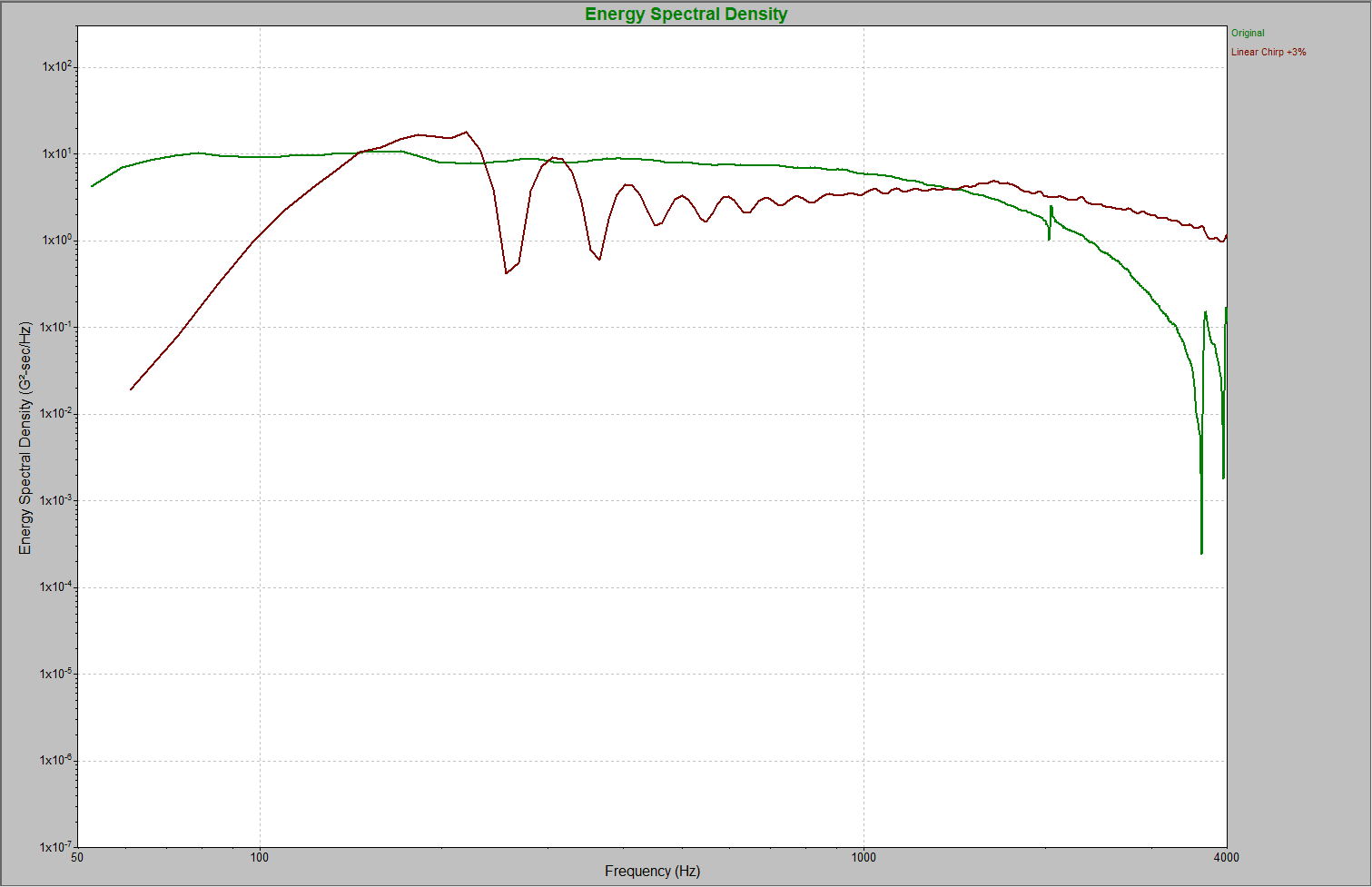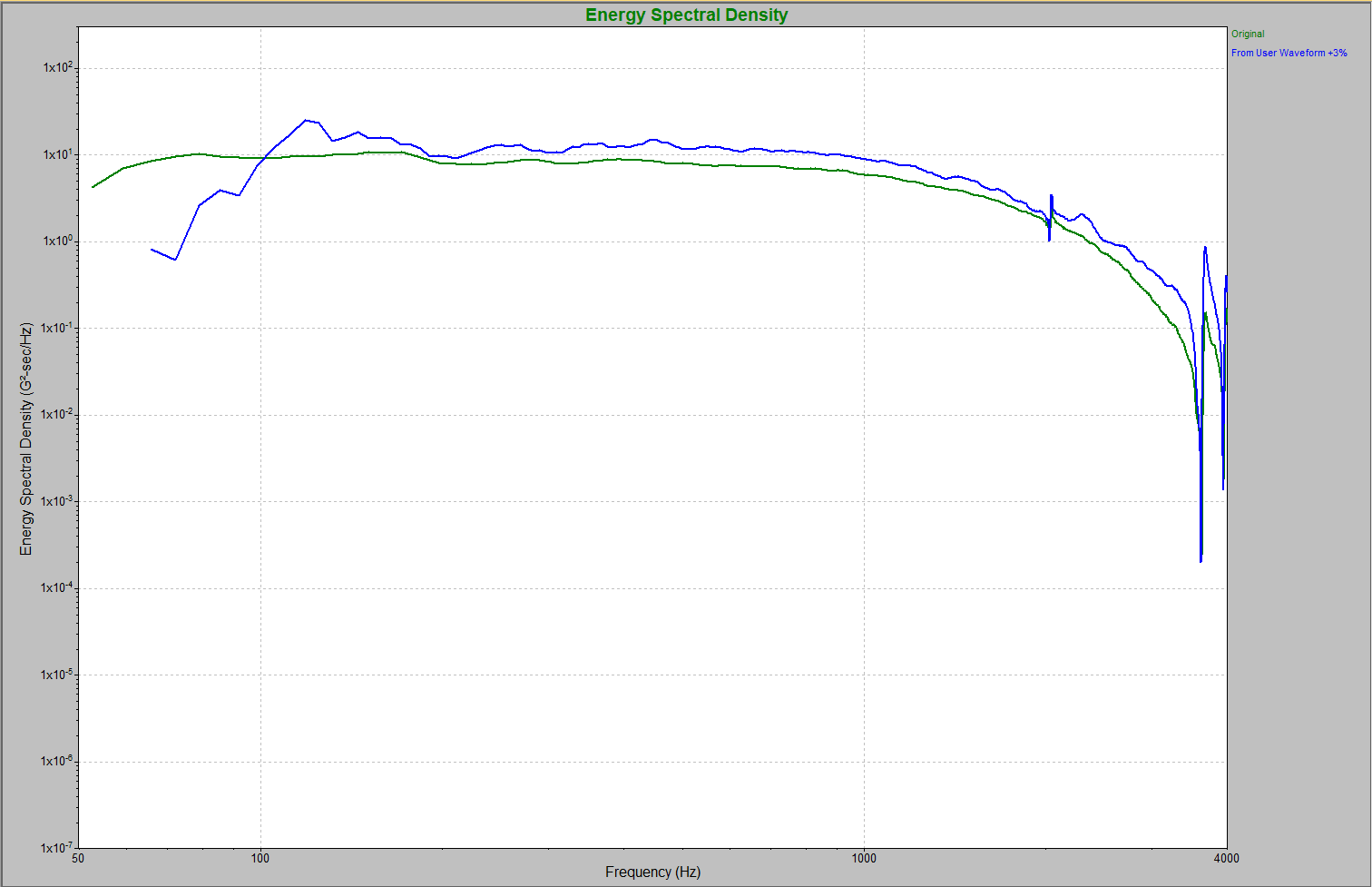Using Recorded Data to Improve SRS Tests
December 30, 2022
Back to: Shock Response Spectrum (SRS)
Various parameters go into synthesizing a pulse equivalent to a specified shock response spectrum (SRS). The testing industry relies on standard synthetic waveforms to develop an SRS. Standard synthetic waveforms include:
- Linear Chirp
- Exponential Chirp
- WavSyn
- Burst Random
- Linear Chirp on Burst Random
- Exponential Chirp on Burst Random
- Enveloped Burst Random
- Damped Sine Waves
There are variations of most of these waveforms. For example, the WavSyn synthesis can be centered, aligned left, sequential, or alternating.

WavSyn wavelet with Frequency=10Hz, Amplitude=1G, and N=11.
Selection Process
Selecting the correct synthetic waveform type depends on the intended application. For example, WavSyn produces a short-duration, high-frequency waveform well-suited for pyro-shock tests. The Burst Random and Enveloped Burst Random methods produce long-duration, stationary random waveforms appropriate for earthquake tests.
Sometimes, the frequency response of the synthetic pulses cannot match a real-world transient event. A synthesized waveform without the correct low-frequency or high-frequency vibrations will not result in a realistic test. Furthermore, a waveform with excessive energy in a frequency range can result in over-testing.

A Linear Chirp waveform overlaid on the original recording.
Field-Recorded Data
Alternatively, an engineer can modify a recorded waveform to meet or exceed a specified SRS. The resulting time waveform is similar to the original field environment. More importantly, the waveform frequency response is close to the original.
Creating an Enveloped Set of Recordings
A real-world data set represents a single unique event. However, using just one event as the basis for a synthesized SRS waveform gives an incomplete description of the shock vibrations that may occur. To avoid this, the engineer can combine multiple real-world data sets into one waveform.
The correct way to combine multiple data sets of transient shock is to find the maximum acceleration value at each frequency (not the average). This “max enveloping” technique produces an SRS curve using the maximum acceleration value from a group of real-world data sets for each frequency.
Comparing Waveforms
The engineer can evaluate the modified user waveform from enveloped data by comparing it with a recorded waveform. They should first consider waveform shape. A shock test must input the correct amplitudes across the frequency domain to be realistic.

Modified user waveform overlaid on the original recording.
A synthetic waveform must also test the device under test (DUT) across the same range of frequencies as the real-world waveform. A synthesized waveform test without low-frequency or high-frequency vibrations will not result in a realistic test.
Lastly, test engineers should consider the energy or amplitude of the waveforms. In addition to the correct waveform shape and frequency content, a realistic test must also have the same amplitude as the real-world waveform.
Conclusion
A modified user waveform generated with the max enveloping technique yields an SRS waveform close to the original real-world waveform in terms of waveform shape, frequency content, and amplitude.
Standard synthetic waveforms often do not match real-world transient events. They are generated with mathematical algorithms and cannot match the realistic qualities of a modified user waveform.
Based on an enveloped set of real-world recordings, the modified user waveform maintains real-world characteristics and creates an SRS waveform that accurately reflects those recorded events.
